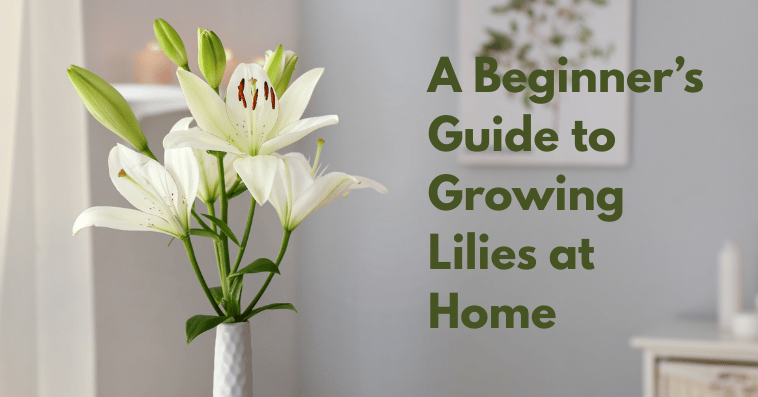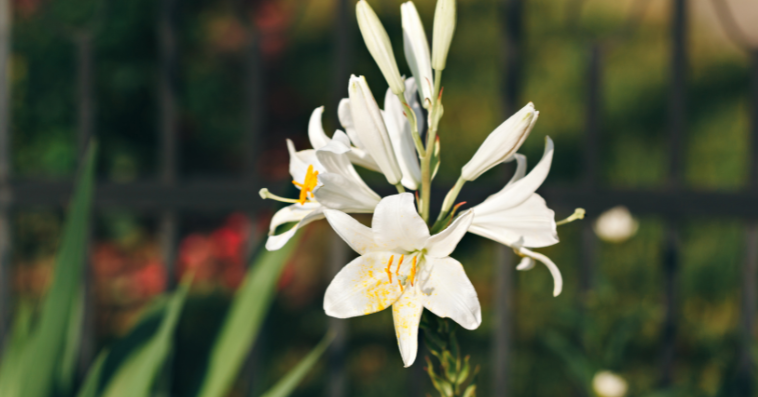Lilies are among the most elegant and fragrant flowering plants you can grow at home. Their trumpet-shaped blooms and vibrant colours make them a showstopper in any garden or indoor corner. Whether you're a new plant parent or a casual hobbyist, growing lilies at home is easier than you think — as long as you understand their basic needs.
In this beginner’s guide, we’ll cover everything you need to know to successfully grow and care for lilies, especially tailored for Indian climates. We’ll walk you through the ideal soil mix, sunlight requirements, watering schedule, and common care tips — plus where to buy healthy lily bulbs and plants online.
🌱 Why Grow Lilies at Home?
Lilies are more than just pretty flowers. Here’s why they’re worth the spot in your garden or balcony:
They’re easy to grow – Lilies don’t require constant attention.
They bloom for weeks, filling your space with colour and fragrance.
They grow well in containers, balconies, terraces, or garden beds.
They’re suitable for Indian climates—especially in winter and early summer.
Popular varieties like Asiatic lilies, Oriental lilies, and Tiger lilies do particularly well in home gardens across India.
🪴 Step 1: Choosing the Right Lily Variety
Before you plant, choose a variety that suits your climate and growing conditions:
Asiatic Lilies – Low maintenance, bloom early, and do well in warm climates.
Oriental Lilies – Known for their fragrance and larger blooms; prefer cooler temperatures.
Trumpet Lilies – Tall plants with large, tubular flowers.
Daylilies (Hemerocallis) – Technically not true lilies but very beginner-friendly and drought-tolerant.
For Indian homes, Asiatic and Daylilies are excellent options, especially if you live in warmer regions.
🌿 Step 2: Soil Preparation – Well-Drained Is the Key
Lilies dislike soggy roots. They grow best in soil that is enriched with organic matter and is loose.
✅ Ideal Soil Mix:
1 part garden soil
1 part cocopeat or sand (for drainage)
1 part compost or well-rotted cow dung
You can also buy ready-made lily potting mix from trusted nurseries. Ensure your container or garden bed has good drainage holes to avoid root rot.
Pro Tip: Avoid heavy clay soils or overly acidic mixes. Lilies prefer neutral to slightly acidic pH (6.0–6.5).
🌞 Step 3: Sunlight – Bright and Direct
Lilies are sun-loving plants. They need at least 5 to 6 hours of direct sunlight daily to grow tall and produce vibrant blooms.
Where to place lilies:
Balcony or terrace gardens: Ideal spots with ample morning sunlight.
Near south-facing windows if growing indoors in containers.
Garden borders or raised beds that get full to partial sun.
If you're in a very hot region, protect your lilies from harsh afternoon sun using garden netting or filtered shade.
💧 Step 4: Watering – Moist, Not Wet
Watering lilies is simple, but it’s easy to go wrong. Lilies hate being overwatered. They grow well in moist soil.
Watering Tips:
Water generously once the upper inch of soil loses moisture.
Avoid shallow watering—it encourages weak roots.
During summers, you may need to water every 2–3 days depending on the heat.
Use a watering can with a fine nozzle to avoid disturbing the soil or damaging young shoots.
Tip: To avoid fungal diseases, focus watering at the base of the plant, not on the leaves or flowers.
🧪 Step 5: Fertilizing – Feed for Bigger Blooms
To grow strong stems and large flowers, lilies need feeding—especially during their growing and blooming season.
Use:
A balanced fertilizer (like NPK 10-10-10) once every 3–4 weeks
Compost or bone meal during planting to improve flower production
Avoid using too much fertilizer, as it often results in more leaves and fewer flowers. Slow-release organic fertilizers are great for beginner gardeners.
✂️ Step 6: General Care & Maintenance
Pruning & Deadheading:
Remove wilted flowers (deadheading) to encourage more blooms.
Cut back the stems only after the plant has completely yellowed and dried—this allows the bulb to store energy for next season.
Support Tall Plants:
Use garden stakes to support taller lily varieties like Trumpet or Oriental lilies.
Avoid planting in very windy spots.
🐛 Step 7: Preventing and Handling Plant Pests
Though generally hardy, lilies may attract a few common pests.
Common Issues:
Aphids – Spray neem oil or soapy water solution weekly.
Red lily beetle – Handpick or use organic pesticide sprays.
Fungal leaf spots or rot – Ensure good air circulation and avoid overwatering.
Tip: Always inspect the undersides of leaves during watering for signs of pests or eggs.
🌼 Growing Lilies in Pots – Urban Gardeners, Rejoice!
Short on space? Lilies grow beautifully in containers!
Container Gardening Tips:
Use pots at least 10–12 inches deep.
Choose dwarf or medium-sized varieties like Asiatic lilies.
Repot the bulbs after the flowering season or let them go dormant in the same container.
Balcony, rooftop, or even sunny window sills—potted lilies will thrive with the right care.
🛒 Where to Buy Lily Bulbs & Plants in India?
Not sure where to get quality bulbs that actually bloom? Look no further than PaudheWale—India’s trusted online nursery for plant lovers.
Why Buy from PaudheWale?
Premium quality lily bulbs with high bloom rates
Pan-India delivery, safely packed and quick to dispatch
Affordable pricing and combo packs for beginners
Expert customer support for plant care queries


